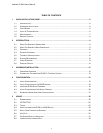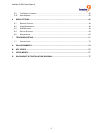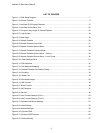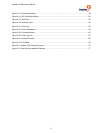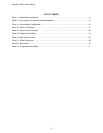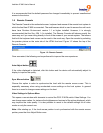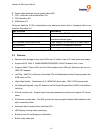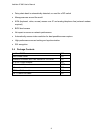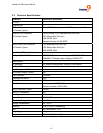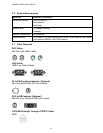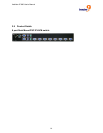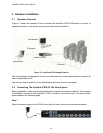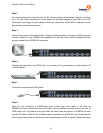freeView IP 800 User’s Manual
2 Introduction
Thank you for purchasing the freeView IP 800. The freeView IP 800 saves money, time, space,
equipment and power. The freeView IP 800 defines a new class of remote KVM access devices;
it combines digital remote KVM access via IP networks with comprehensive and integrated
system management.
The device provides convenient, remote KVM access and control via LAN or Internet. It captures,
digitizes, and compresses the video signal and transmits it and keyboard and mouse signals to
and from a remote computer. The freeView IP 800 provides a non-intrusive solution for remote
access and control. Remote access and control software runs on the embedded processor only
and not on the mission-critical servers, so that there is no impact on server or network
performance.
Furthermore, the freeView IP 800 offers additional remote power management when used with
an optional IP Power device.
The device supports consoles consisting of a PS/2 keyboard and mouse and HDDB 15 video
output and will automatically detect the current video mode of the console. The freeView IP 800
will accept video streams up to 110 MHz. This results in a screen resolution of 1280x1024 pixels
with a frame rate of 60 Hz.
2.1 When The Server Is Operational
The freeView IP 800 gives you full control over the remote server. The Management Console
allows you to access the remote server’s graphics, keyboard and mouse and the ability to send
special commands to the server. You can also perform periodic maintenance on the server.
Using the Remote Console, you can do the following:
A. Reboot the system.
B. Monitor the boot process.
C. Boot to a different operating system on dual-boot machines.
D. Boot up in Windows Safe Mode.
E. Boot the system from a separate partition to load diagnostic environment.
F. Run special diagnostic programs.
2.2 When The Server Is Non-Operational
Using the freeView IP 800, the system administrator can discover problems with the server;
though fixing hardware problems is not possible through a remote management device.
Nevertheless, the device gives the administrator valuable information about the type of hardware
failure. Serious hardware failures can be categorized into five different categories, with the
percentage chance of failure listed below:
A. Hard disk failure 50%
9



